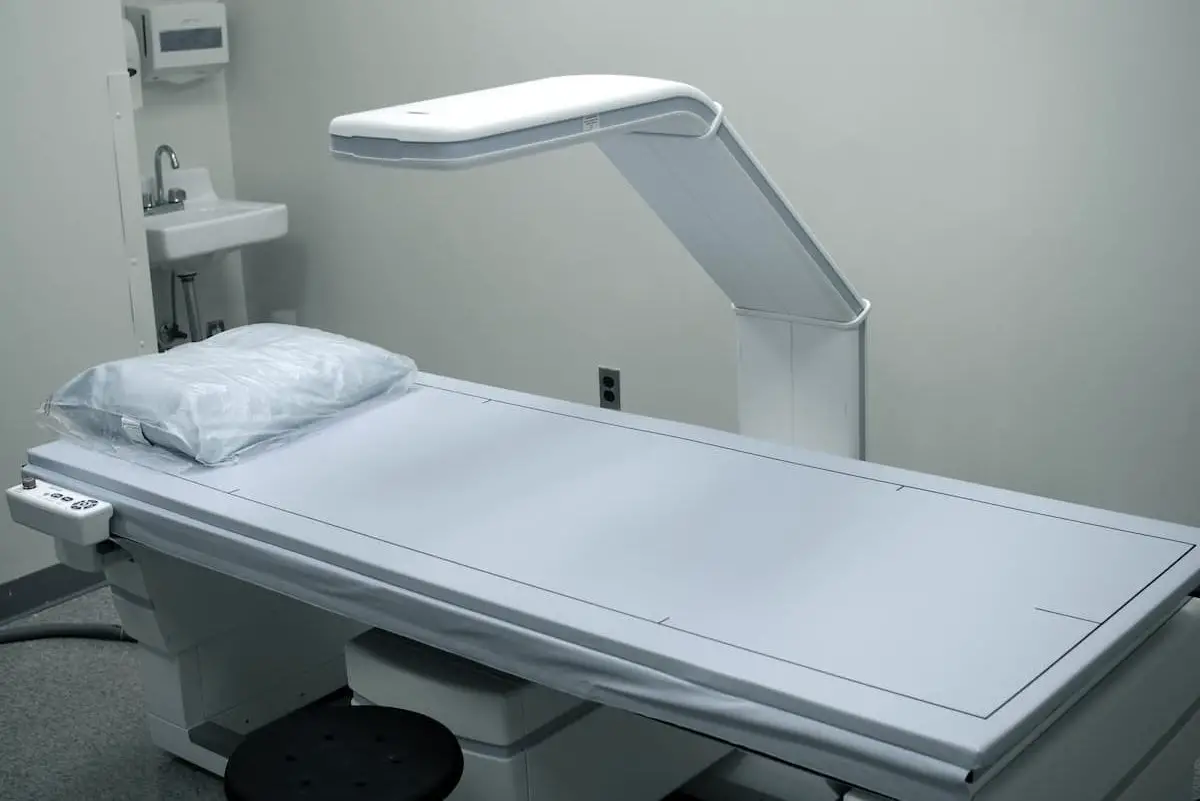Just like taking a car in for an inspection to understand or identify any internal problems, the same can be said for body composition tests. These tests are meant to give an inside look into the body to understand how effective the body is working through internal processes.
Body composition tests can answer questions regarding how internal organs or muscles are functioning or if there are any red flags that need to be addressed. Depending on what specific functionality needs to be assessed will determine which kind of test is chosen.
The five most common types of body composition testing include, Body Mass Indexing (BMI), DEXA/DXA Scan, Bod Pod, Underwater or Hydrostatic Weighing, and Skinfold Calipers. The body is complex which means there’s more than one way to measure or gather body composition data.
Each one of these tests takes measurements in a different manner, but ultimately they all look at similar factors that affect health and well-being of the subject. A doctor or clinician can set these tests up and interpret the results.
While results will vary depending on which measurement method is used, none have caused quite as much controversy as Body Mass Indexing. Every few years there seems to be a flourishing resurgence of fitness or clinical experts admonishing BMI analysis for various reasons.
The main arguments being that it does not accurately measure or interpret results correctly. Professional athletes with higher muscle to body fat ratios can be indexed as obese and therefore be flagged for serious health problems.
Whereas people with serious health problems may go unidentified because they are measured to be in the normal range on the index.
What is Body Composition?
Body composition is the process of breaking down the body into core components that include fat, minerals, muscles, and body water to understand health and general well being.
Body composition measurements are used to analyze changes in body like excess fat or muscle build, as well as underlying health problems that should be addressed.
Conversations around working out or general health can lean towards weight as an accurate measurement of well-being and health. But weight is one piece of the puzzle when it comes to body composition.
Looking at a scale will not show you how likely you are to develop heart disease or diabetes — only a complete body composition test will show you these predictors.
Many factors can affect body composition and need to be taken into consideration when interpreting results and assessing a proper treatment or regiment.
Factors like, age, genes, hormones, sex, race, and nutrition can all have significant affects on body composition measurements.
This is why it is important to talk with a doctor or certified clinician to understand the data and develop a plan to best suit your health and physical needs.
Type of Body Composition Tests
Body Mass Index
Body Mass Index or BMI is probably the first body composition test that comes to mind. It’s commonly used by many in the health and fitness industry since it can be performed quickly and cheaply.
Body Mass Index is an estimate of body fat taken by measuring height and weight of an individual. Once the measurement is taken it can be compared to the index or chart developed nearly 200 years ago by a Belgian academic, Adolphe Quetelet.
The CDC warns that BMI can be used as a screening tool but not as a diagnosis tool. To determine health risks, it is recommended that further tests be performed.
The problem with BMI is that it mainly measures body fat as opposed to body muscle. People are assessed and placed into categories based on results of underweight, normal, or overweight.
Now, that sounds pretty helpful but there are plenty of shortcomings to this method.
Preventative medicine expert Dr. David Katz explains, “The problem with the BMI, while it does adjust for height, it does not adjust for what makes up the weight.”
He goes on to say, “So somebody who’s extremely muscular could have a high BMI and yet have a very low percent body fat, which is what you’re really concerned with.
Somebody who has very little musculature could actually register as lean on the BMI scale, and still have an excess body fat (CBSnews.com).”
In recent years, criticism over this test has raised some eyebrows. Some call the test racist and sexist considering that the test was never intended for health purposes but instead for statistical purposes.
The development of the test primarily focused on white nations measuring men. Therefore accuracy of the index has been admonished by many.
DEXA/DXA Scan
Dual Energy X-Ray Absorptiometry (DEXA) is a type of imaging technology that measures the body composition of bones, muscle mass, and fat.
This form of body composition testing is the most accurate since it can measure so many different parts of the body. This test typically takes anywhere from five to thirty minutes to complete.
The basic set up has the patient lay down flat while dual imaging x-rays snap pictures of the body. This type of test is often used to measure bone density in older adults and used to diagnose osteoporosis.
Air Displacement Plethysmography – ADP
Air displacement Plethysmography(ADP) measures the volume of the body by monitoring changes in air pressure as determined from a chamber. In short, it measures the volume of air an individual displaces.
Weight and volume is taken to determine the density of an individual. From that measurement a percent of body fat can be determined. Like the DEXA scan, the ADP chamber is considered to be a highly effective analysis of body composition.
Hydrostatic Weighing
Hydrostatic weighing or underwater weighing was developed by the ancient Greeks. Similar to the ADP test, a hydrostatic test measures the volume of water displaced by an individual being submerged.
This form of testing is also regarded as extremely accurate and is actually considered the gold standard for measuring body composition.
Skinfold Calipers
The skinfold caliper test, also known as the pinch test, involves pinching an area of fat and measuring the thickness with a caliper. This type of test can be less accurate since fat displacement varies from person to person.
These types of tests should not be used to assess elderly adults due to their weak skin and muscles. Accuracy also depends on the skill of the measurer. The results are totaled and put into a table which gives a percent body fat reading.
Final Thoughts on Body Composition
There are plenty of tests to determine body size or body composition which measure the core component of the human body such as fat, minerals, and muscle.
These tests can give us an inside look into the health and well-being of individuals. It can alert those who may be trending towards serious health conditions and offer treatments to adjust course.
While some tests are more accurate than others, and some more controversial than others, give us basic information about our body composition to make informed decisions.
Tests like DEXA/DXA san, Hydrostatic Weighing, and ADP scans are considered to be the gold standard of body composition tests as they provide the most accurate information.
Tests like BMI and the Skinfold Caliper are less reliable but easily accessible to most. Their results do not give individuals a clear picture of their body composition, but rather their body fat percentages.
This factor alone has been criticized and noted not to be used to make any type of diagnosis, but rather be used as a screening tool. Any further concerns should be addressed by other tests.
Sources: fitnesscity.com ; woosterhospital.org ; cdc.gov ; inbodyusa.com ; verywellfit.com; CBSnews.com; sciencedirect.com; elemental.medium.com
Tired of No Gym Equipment? Get started with Rogue Fitness Today!
My wife and I found Rogue Fitness for home workout setups and have been amazed at the quality and overall craftsmanship. With the current stay-at-home issues over the virus having a personal gym has become much more of my focus.
Purchasing the Rogue Fitness gear has allowed me and my wife to work out on a timetable that fits us. Also, this allows me to skip the gym as I always feel like people are staring and I am self-conscious of how I look still.
I can’t recommend them highly enough, they aren’t the most inexpensive but compared to a monthly charge for a gym membership you do start to become profitable over time by saving the monthly expense.

Join Us On Facebook
Explode Your Limits
If you are looking for people to talk to about your journey join us all today!




